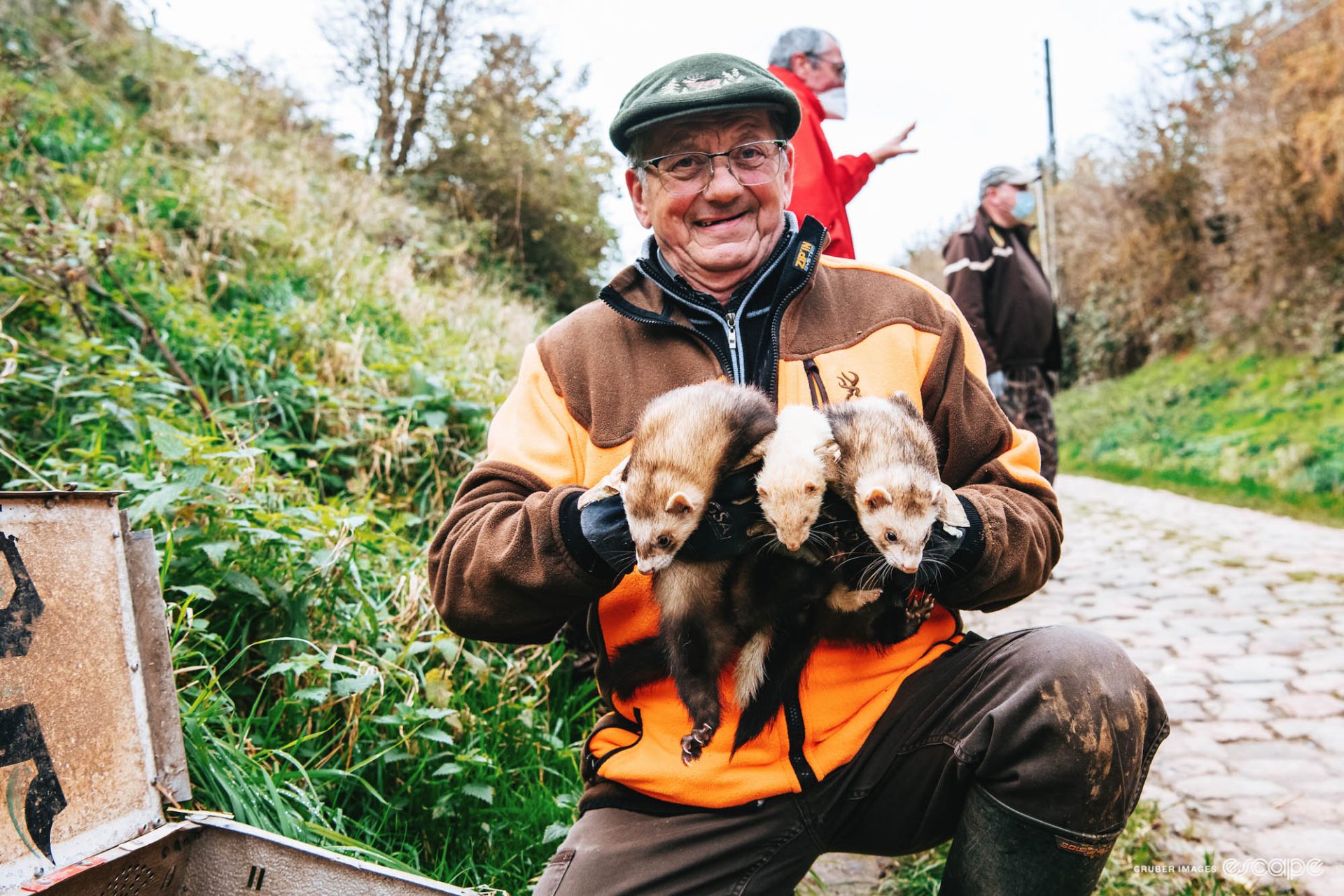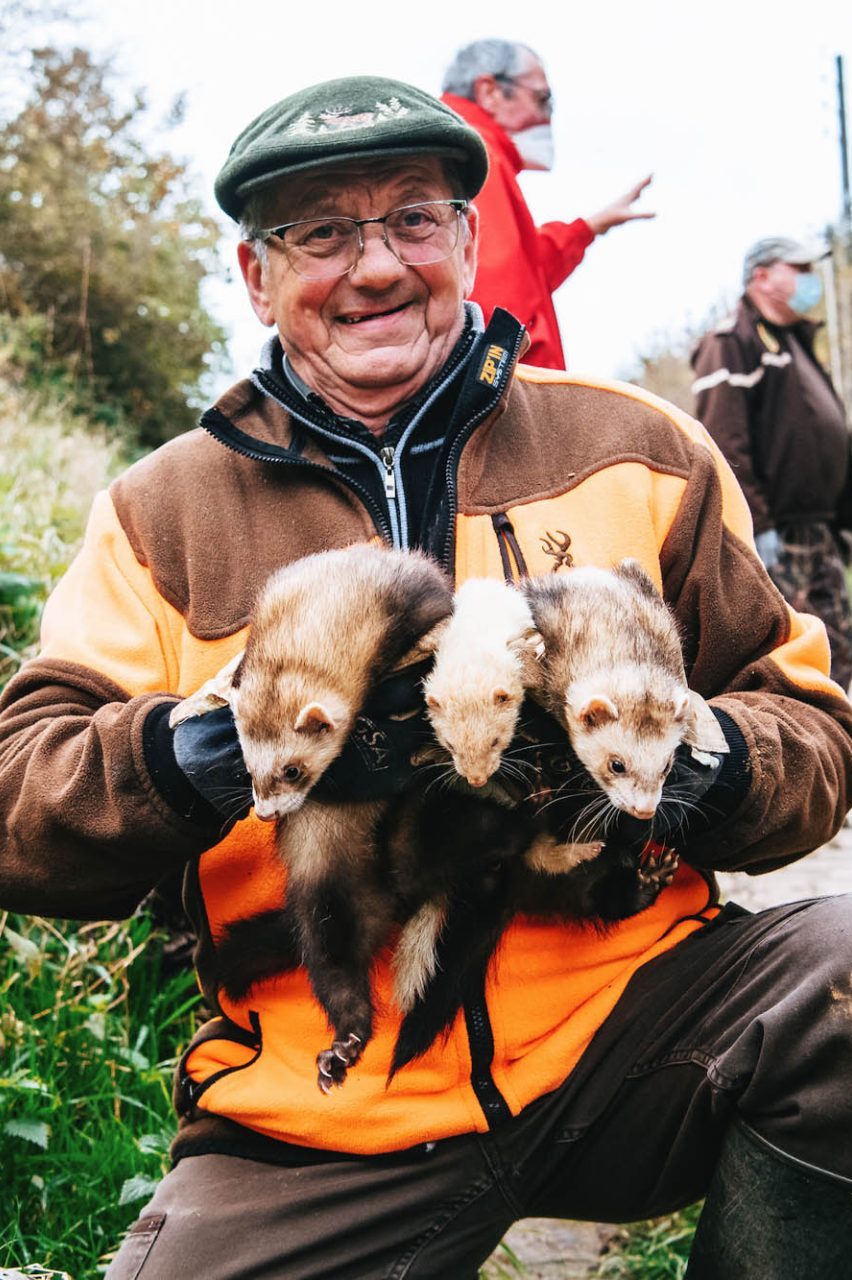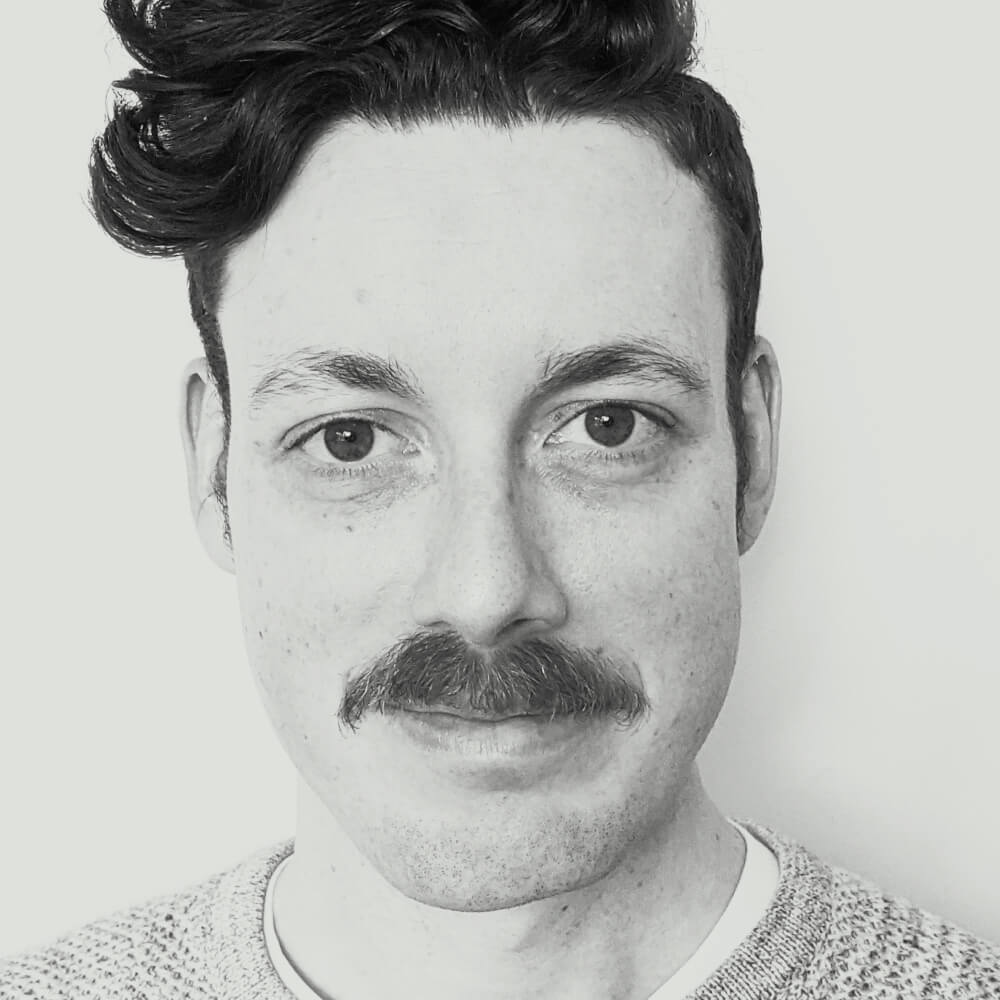In the back end of our photographers’ websites lies a vast archive of images – some of them very old, some of them very weird, and some of them stirringly beautiful – and from time to time, when I’m searching for something else, I get … distracted.
Buried in a sub-folder of a sub-folder of Gruber galleries is one such sequence of shots that gave me pause. In 2020 – way back in that hazy daze when the novel coronavirus was still novel – the race calendar was dramatically recast as a result of the pandemic. Twenty-five races, including all three Grand Tours and most of the Classics, were crammed into just three months, from August to late October. An autumnal Paris-Roubaix was slated to close the curtain at the end of the season until a second wave swept France, forcing its late cancellation.
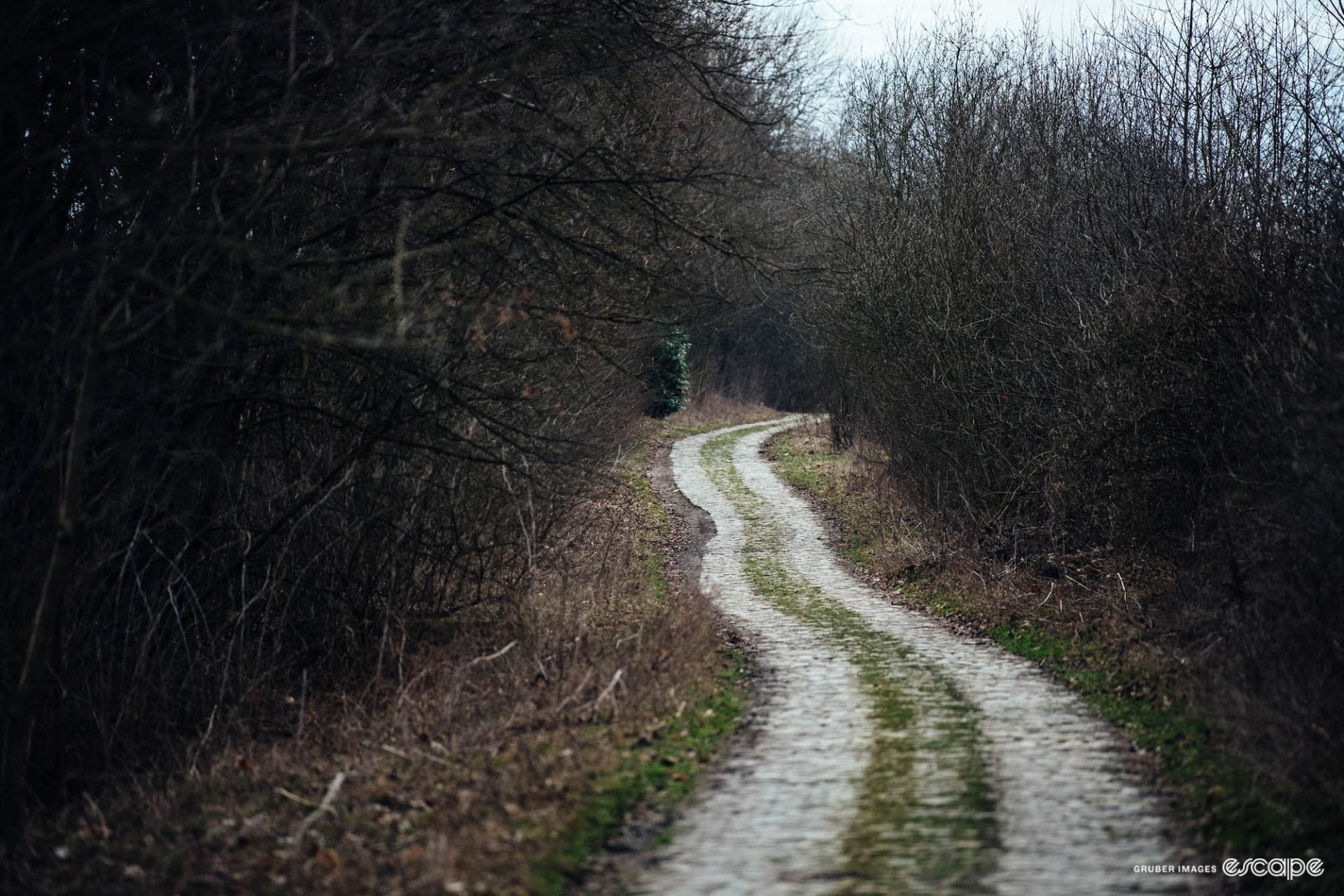
Husband and wife photographers Jered and Ashley Gruber, who’d spent those frantic few months capturing a socially distanced, late-season Tour de France and many more races besides, had a standing appointment with Paris-Roubaix – the Spring Classic that had become an autumn classic and then had become no classic at all. But they were determined not to have the weekend be a complete write-off.
“We wanted to do something – something to do the wildest one-day race of the year some kind of justice,” Jered wrote at the time. “We figured we would ride it, shoot it, experience it, live it for a day – and pay our respects to the most savage of all the races.” And what could be better to do than ride the thing?

A few years ago I pulled a gallery together* of appropriately atmospheric shots from this ride, beautifully photographed by Ashley. Jered and his friend (and moto pilot) Michael Ossieur rattled their way over the dank cobbles, through faded towns surrounded by dying trees, through fields of blank mud rather than blossoming life.
(*That CyclingTips gallery doesn’t exist anymore, thanks to the fickle nature of mergers and acquisitions and hopelessly executed content migrations.)
Last week, though, I was tipped off that there was some undiscovered gold lurking in the fertile soil of the Gruber’s shots from that day. The real good stuff was buried about 80 shots down: no moody pictures of bikes or cobbled roads or people stacking it, but 10 or so shots without a bike in sight. I’m almost embarrassed to admit how badly I missed the mark with that initial gallery …
I had missed the ferrets.
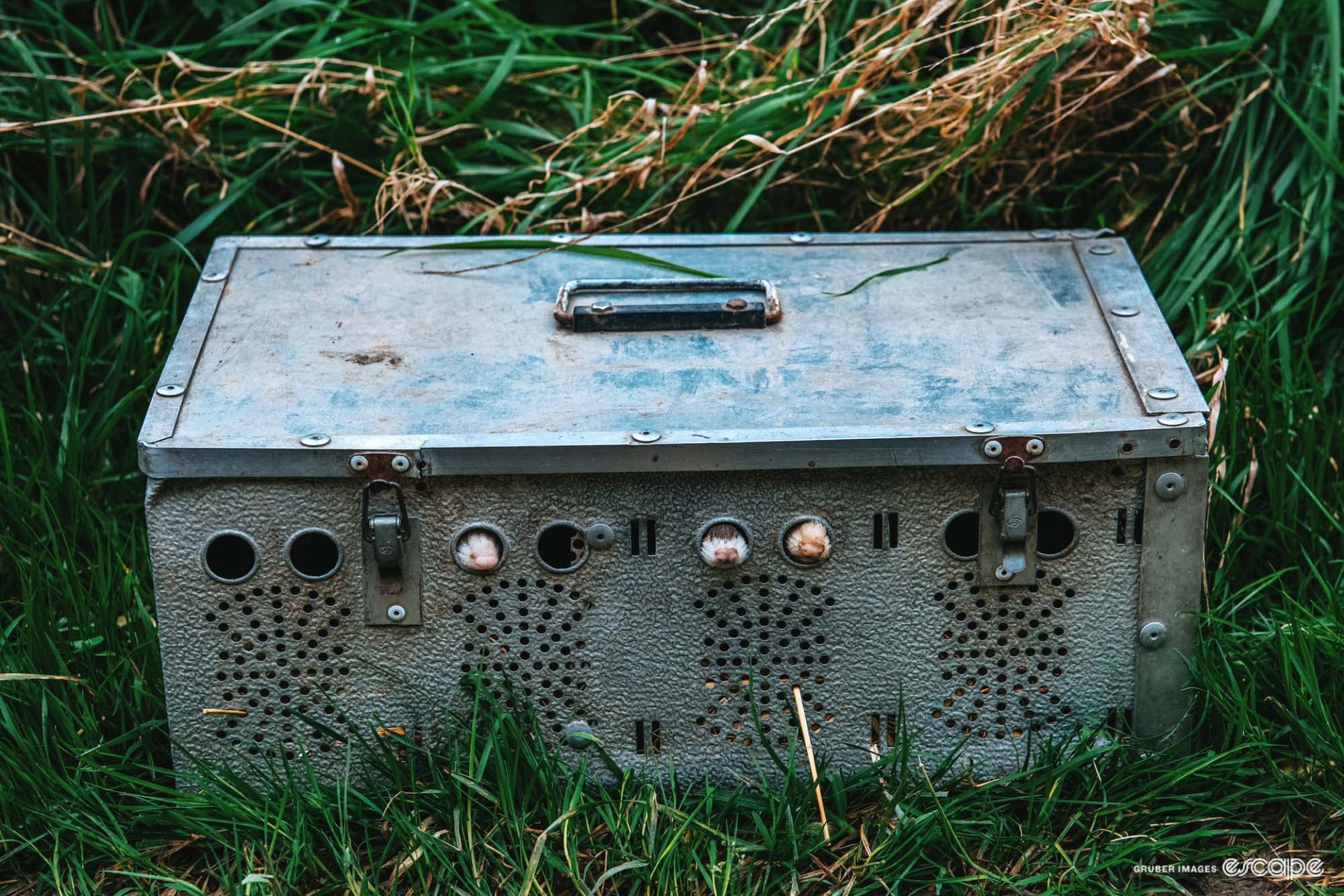
There are photos of a rustic-looking older gent in high-vis fleece holding three ferrets, shots of a younger guy cuddling up to a golden-coloured one with red eyes, photos of a man staring wistfully off into the bushes (presumably in search of said ferrets). The three men in the pictures are all wearing hunting gear and little hats, and they seem genuinely stoked about their furry friends, but – being a big dumb city slicker – I only had the vaguest understanding of what ferrets do (something burrow-related?) and why they might be assembled on a cobbled farmroad in rural France.
There was only one thing for it: talk to a primary witness (AKA, fire off a deranged email to a very patient Jered and Ashley Gruber).
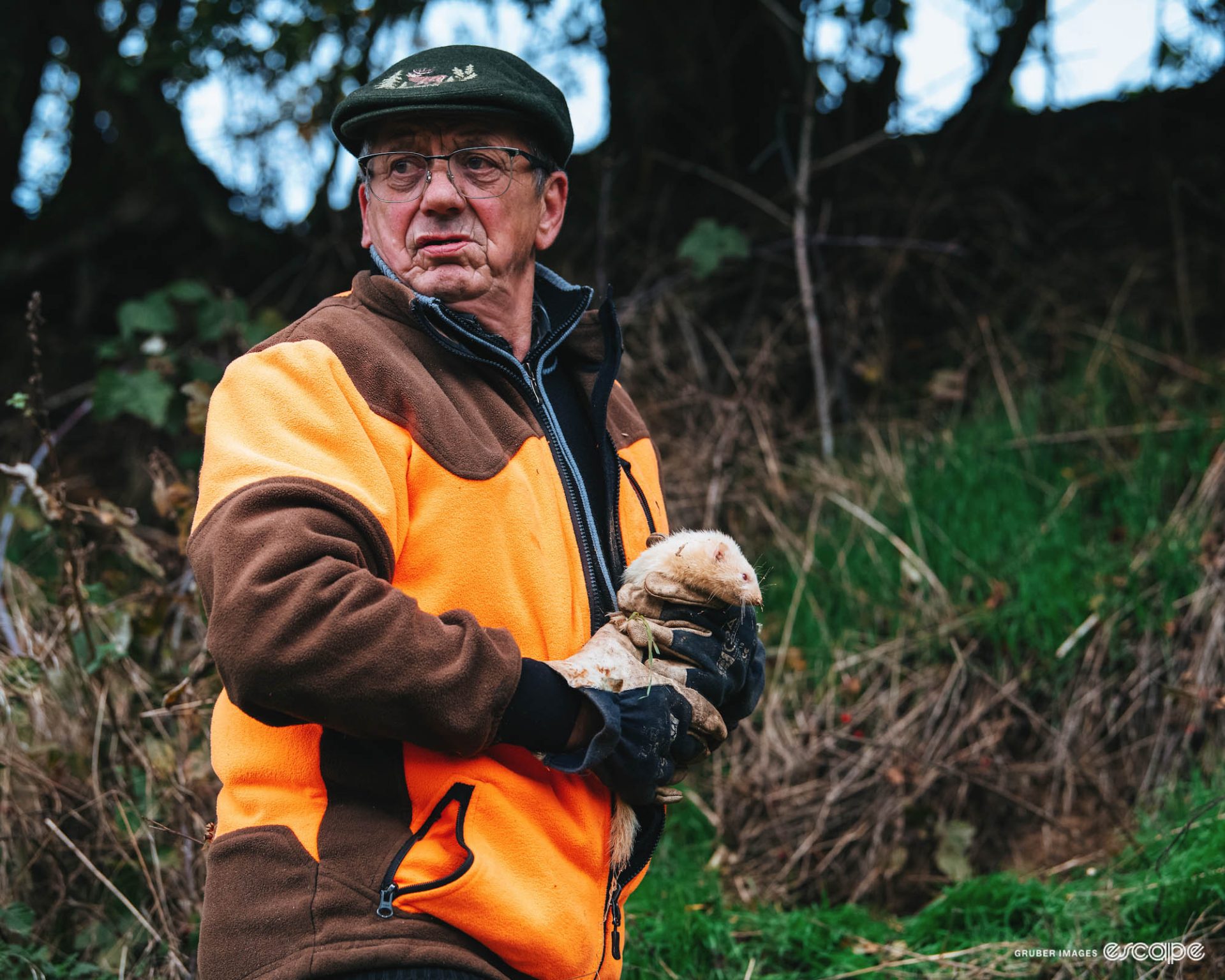
According to Jered (“I love that you found these!,” he began) they were just riding along minding their own business when “we happened along this little group of old dudes doing the weirdest thing.” Ashley picks up the story: “Obviously we had to stop and ask what was going on, and these cute old dudes were all too happy to oblige.” (I trust by now you understand why Jered and Ashley are the best.)
They were, Ashley explained, using not just ferrets but smoke as well, “to, well, ferret out rabbits who had taken up residence in the retaining wall they built on the edge of the fields.” So far so good, but I wanted to know more. Were the ferrets high-maintenance hunters? Were they simply tools for a task, or beloved pets, or somewhere in the middle?
Ashley had the answers. There was “one notably sweet ferret who was cuddled,” she confirmed – although on the photographic evidence we have two candidates for this (I’m betting on this lighter coloured cutie):

As for their maintenance levels, you’d perhaps be unsurprised to learn that these squirmy little fur sausages were both excitable and erratic. “They seemed to need the whole assemblage of men to keep track of the ferrets,” Ashley told me. And even that didn’t work, based on the photographic clues we have from the day. “The golden child was momentarily lost in the grass, which was cause for panic,” Ashley explained. “It was the most memorable part of the day for me.”
And then, after sharing this special moment, the Grubers and the Ferret Men parted – the cyclists bumping on their way towards the velodrome some time later, the hunters ridding their fences of rabbits. A day in October that should have been filled with the clatter of helicopters and motos and screaming fans and athletes in pursuit of one of the sport’s most iconic and brutal prizes, replaced by a homelier quest for some hopping game.
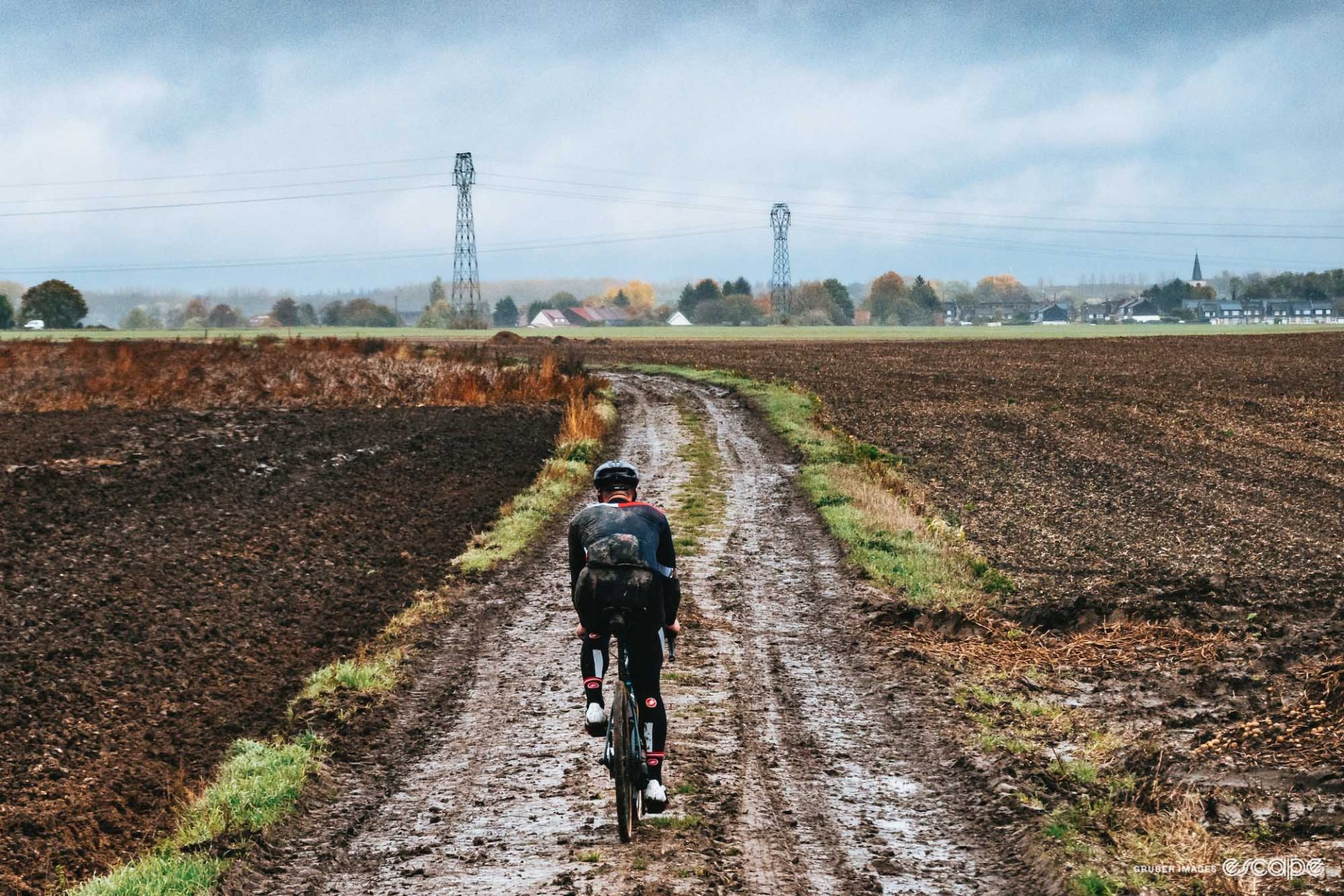
Every so often – maybe more often than not – I think it’s easy to forget the canvas on which cycling is painted. This is a sport not of stadia and auditoriums but of roads threaded through countries with stories local, regional, historical, sociological. In such and such pocket of Spain, you find the Basques. And in this little pocket of France, you find the cobbles and the working folk, hunting rabbits using toothy little noodles on legs.
For the time that a race passes, it is the background scenery of a day in this sport, there and gone in a technicolour blur. Sometimes, though, when the world grinds to a halt because of a virus and some photographers pass through, the background becomes the star of the show.
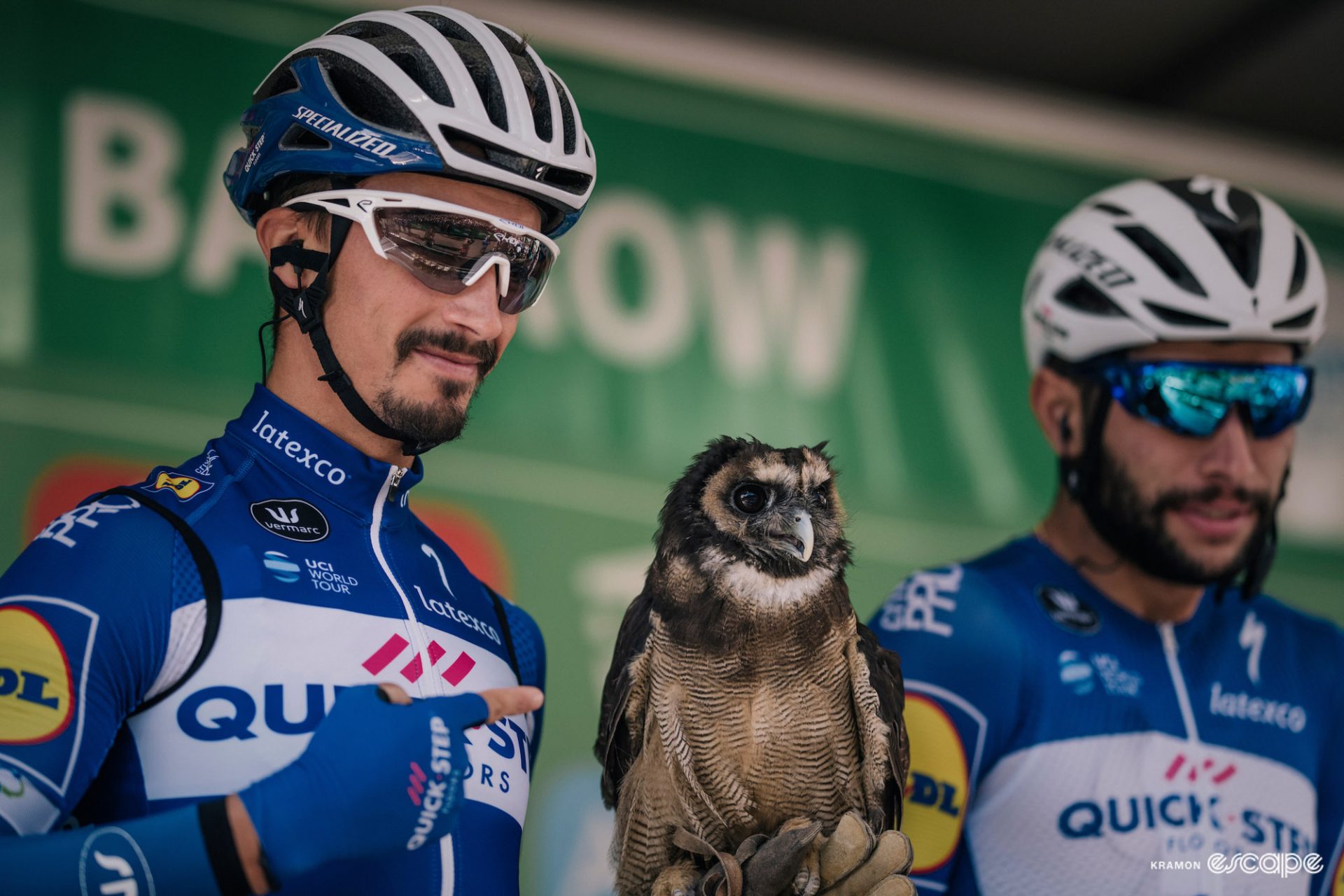
Did we do a good job with this story?
